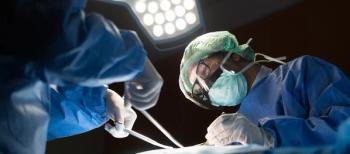
��“Of all the SSIs we culled over that 3 years, about 42% of them required a wound class change by an infection preventionist,” Emily Grohs, MPH, CIC, tells ICT®.


��“Of all the SSIs we culled over that 3 years, about 42% of them required a wound class change by an infection preventionist,” Emily Grohs, MPH, CIC, tells ICT®.

Take 5 minutes to catch up on Infection Control Today’s highlights for the week ending June 3.

AMR and surgical site infections are a consistent issue for surgeries, and often surgeons feel they have done everything they can to reduce the risk, and yet the event still occurs with an alarming frequency. Is there anything novel that can be done? ICT® tries to find out.

Take 5 minutes to catch up on Infection Control Today’s highlights for the week ending May 27.

To reduce the risk of surgical-site infection, utilize evidence-based interventions and give feedback to clinicians on bacterial transmission using Staphylococcus aureus as a marker.

A new comprehensive article lays out best practice guidelines for 14 areas of infection prevention and control.

Take 5 minutes to catch up on Infection Control Today’s highlights for the week ending May 13.

Sterile processing of robotic surgery instruments and other complex instruments require complex methods.

Take 5 minutes to catch up on Infection Control Today’s highlights for the week ending May 6.

Time, staff, and budget constraints make it difficult to expand HAI mitigation programs despite the obvious and urgent need to do so.

Take 5 minutes to catch up on Infection Control Today’s highlights for the week ending April 29.

Terra Kremer, the senior program manager of microbiological quality and sterility assurance at Johnson & Johnson, and technical lead of the Device Processing Tiger Team, spoke with ICT® about her research on time and efficiency of sterile processing and what is most affecting the industry today.

Total dissolved solids, pH levels, and iron levels are only a few components that must be considered.

With 60% of surgical site infections estimated to be preventable, IPs hold a key prevention role in patient safety.

Take 5 minutes to catch up on Infection Control Today’s highlights for the week ending April 15.

Most information on SSI risk factors in the elderly is more than 10 years old.

Susan “Suzy” Scott, MSN, RN, WOC Nurse, also speaks to Infection Control Today® about incident tracking and electronic medical records.

After an Expo like no other, Dennis looks forward to the 70th year of advocacy for perioperative nurses.

Take 5 minutes to catch up on Infection Control Today’s highlights for the week ending April 8.

From 2014 to 2021, continued FDA reports have shown multidrug-resistant bacteria contaminating 6 types of endoscopes have had fatal consequences.

The letter comes after a year of reprocessing validation testing and a voluntary medical device recall.

Rethinking the application of air disinfection in the era of COVID-19.

Take 5 minutes to catch up on Infection Control Today’s highlights for the week ending March 25.

The technology allows the drape to be used without harming fragile or sensitive skin.

Summary: Take 5 minutes to catch up on Infection Control Today’s highlights for the week ending March 18.